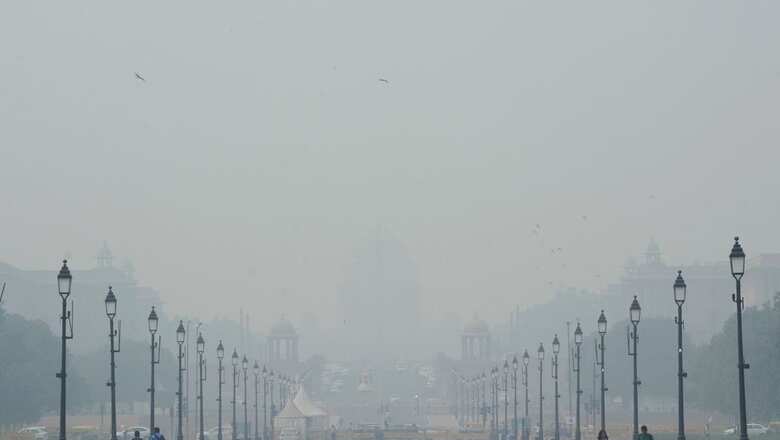
views
Delhi’s air quality marginally improved on Saturday but still stood in the ”very poor” category with monitoring agencies anticipating further relief due to a western disturbance which may improve meteorological conditions starting Sunday. The national capital has recorded 10 severe air quality days this November so far.
The city recorded just three severe air quality days in November last year, while it experienced 12 such days in 2021, the maximum in the month since the Central Pollution Control Board (CPCB) began monitoring. There were nine such days in November 2020; 7 in 2019; 5 in 2018; 7 in 2017; 10 in 2016 and 6 in 2015, according to CPCB data.
Air quality in Delhi turned ’severe’ on Friday with a drop in minimum temperatures and slow wind speed at night allowing accumulation of pollutants. The city’s air quality index (AQI) stood at 389 at 4 pm, improving from 421 at 8 am.
A scientist at the India Meteorological Department (IMD) predicted a relief due to a likely improvement in meteorological conditions under the influence of a western disturbance expected to affect northwest India starting Sunday. Delhi saw a gradual increase in AQI levels after a marginal improvement last Sunday.
The 24-hour average AQI, recorded at 4 pm every day, was 415 on Friday, 390 on Thursday, 394 on Wednesday, 365 on Tuesday, 348 on Monday and 301 on Sunday (November 19). The rise in the AQI levels comes after the Centre last Saturday removed stringent curbs, including a ban on construction work related to linear projects and the entry of polluting trucks in Delhi, following a drop in pollution levels due to a favourable wind speed and direction.
An AQI between zero and 50 is considered ’good’, 51 and 100 ’satisfactory’, 101 and 200 ’moderate’, 201 and 300 ’poor’ , 301 and 400 ’very poor’, 401 and 450 ’severe’ and above 450 ’severe-plus’. According to a joint project by the Delhi government and the Indian Institute of Technology (IIT), Kanpur, biomass burning stood out as the top reason for Delhi’s foul air, contributing 51 per cent to the capital’s air pollution on Friday.
The data revealed that vehicular emissions accounted for about 31 per cent of the capital’s air pollution the previous day. Delhi Environment Minister Gopal Rai has directed agencies and departments concerned to ensure strict implementation of curbs on polluting vehicles and check the increasing incidents of biomass burning.


















Comments
0 comment